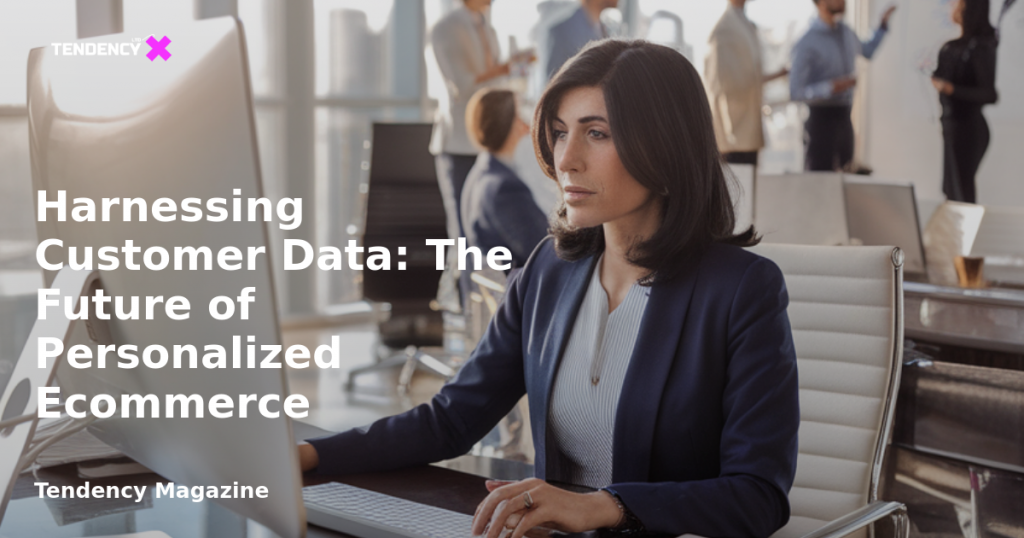Harnessing Customer Data: The Future of Personalized Ecommerce

Table of Contents
- Introduction to Personalized Ecommerce
- The Challenges of Consumer Data Privacy
- The Importance of Personalization in Ecommerce
- Benefits of Ecommerce Personalization
- Building a Unified Customer Profile
- Utilizing Customer Data for Personalization
- Types of Ecommerce Personalization
- Enhancing Customer Experience Through Personalization
- Next Steps for Implementing Personalization Tactics
- FAQs on Ecommerce Personalization
Introduction to Personalized Ecommerce
As digital commerce continues to grow, the ability to tailor shopping experiences to individual preferences has become a key differentiator. Personalized ecommerce involves using customer data to customize interactions, from website navigation to marketing communications, creating a more relevant and engaging shopping journey.
The Challenges of Consumer Data Privacy
Recent shifts in consumer privacy regulations have made targeting audiences with traditional advertising methods more challenging. Major tech companies like Google, Apple, and Meta have implemented changes that limit third-party data tracking, pushing businesses to rethink their data strategies. Consumers now expect transparency and control over their personal information, demanding a balance between personalization and privacy.
The Importance of Personalization in Ecommerce
Despite privacy concerns, consumers still desire personalized experiences. According to recent studies, a significant majority of shoppers expect brands to understand their preferences and deliver tailored content. This expectation underscores the need for businesses to invest in personalization strategies that respect consumer privacy while enhancing engagement.
Benefits of Ecommerce Personalization
Personalization directly impacts a brand’s bottom line by improving customer engagement, increasing conversion rates, and fostering loyalty. Personalized marketing campaigns, particularly those that leverage email and SMS, have been shown to significantly outperform generic approaches, leading to higher order rates and repeat purchases.
Building a Unified Customer Profile
To achieve effective personalization, businesses must develop comprehensive customer profiles using zero-party and first-party data. Zero-party data includes information willingly provided by customers, such as email addresses and preferences, while first-party data is gathered from customer interactions with owned channels. These data types form the foundation of a unified customer profile, enabling more precise targeting and personalization.
Utilizing Customer Data for Personalization
With a robust data infrastructure, businesses can leverage real-time behavioral, contextual, and session-based data to create personalized experiences. This data informs everything from personalized website content to targeted messaging, allowing brands to engage customers in meaningful ways.
Types of Ecommerce Personalization
- Website Personalization: Tailoring website content based on customer behavior and preferences enhances the shopping experience, increasing engagement and sales.
- Email Personalization: Personalized emails with dynamic content and recommendations cut through the noise, improving open and conversion rates.
- SMS Personalization: SMS offers a direct line to customers, enabling personalized communication that reflects their interests and behaviors.
- Mobile App Marketing Personalization: In-app messages and push notifications tailored to user preferences keep customers engaged and informed.
Enhancing Customer Experience Through Personalization
Personalization can enhance every stage of the customer journey, from awareness to loyalty. By delivering relevant content and offers, businesses can improve customer satisfaction and retention, ultimately driving long-term growth.
Next Steps for Implementing Personalization Tactics
To effectively implement personalization strategies, businesses need to gather high-quality data and leverage tools that integrate marketing, service, and analytics. Platforms that centralize customer data and facilitate personalized communications are essential for executing these tactics successfully.
FAQs on Ecommerce Personalization
- Why is ecommerce personalization important? Personalization enhances the customer experience, leading to higher engagement, conversion rates, and loyalty.
- What is the difference between personalization and customization? Personalization automatically tailors experiences based on data, while customization allows customers to modify their experiences.
- How can I measure the effectiveness of personalization efforts? Use A/B testing to evaluate the impact of personalization on engagement and conversion metrics.
- What technologies are used for personalization? Technologies like AI, machine learning, B2C CRMs, and dynamic content engines are crucial for implementing personalization strategies.
- What are the challenges of implementing personalization? Challenges include data collection and analysis, as well as integrating marketing tools to deliver personalized experiences.
In conclusion, personalized ecommerce is not just a trend but a necessity in today’s competitive landscape. By responsibly harnessing customer data, businesses can create meaningful interactions that drive engagement and foster lasting customer relationships. As privacy regulations continue to evolve, the ability to balance personalization with consumer trust will be key to future success.
2025 Tendency LTD. All rights reserved.

